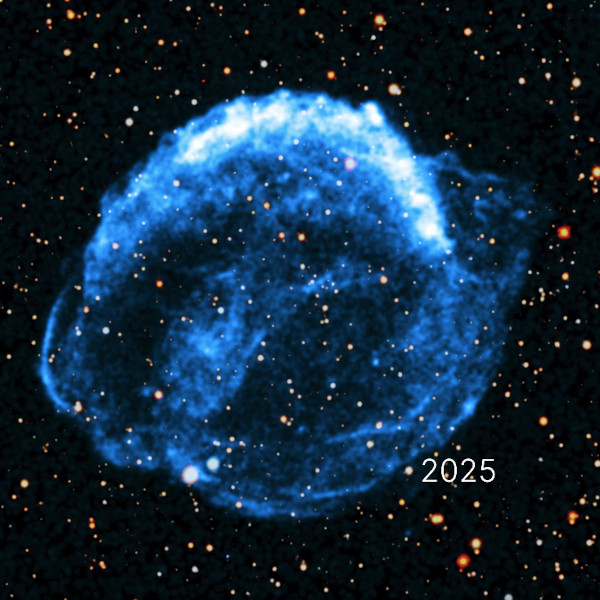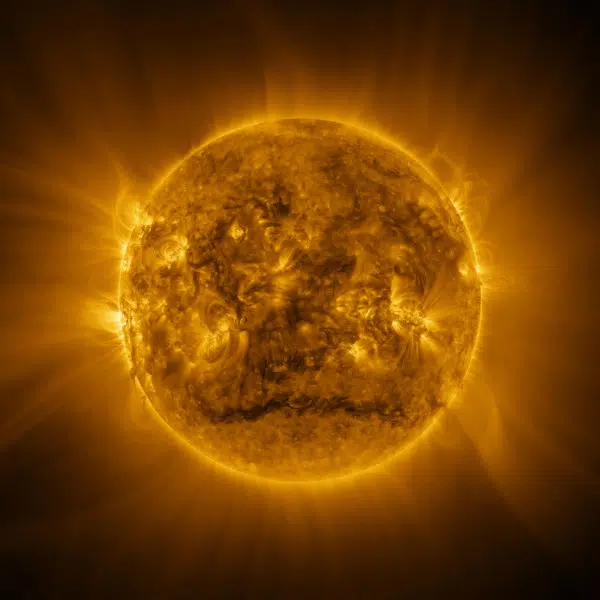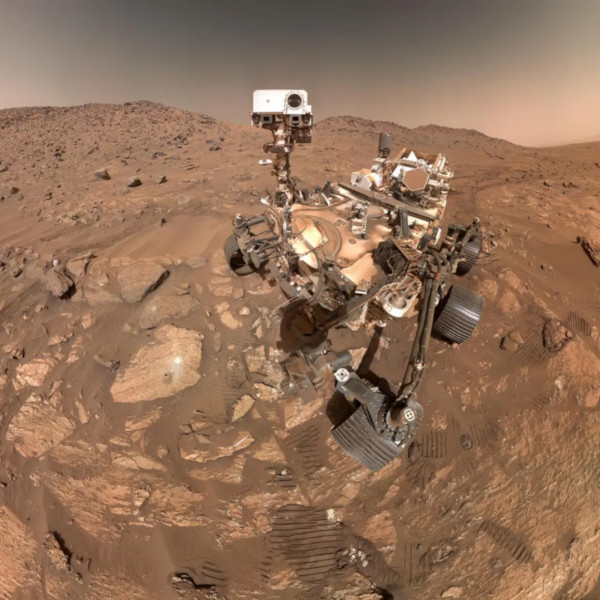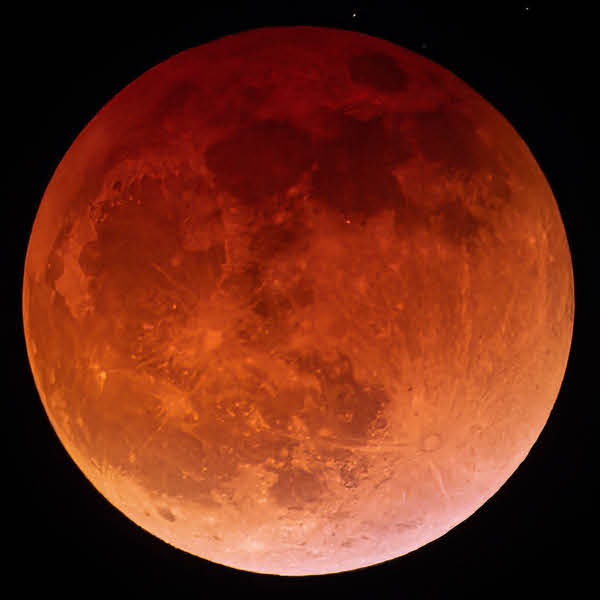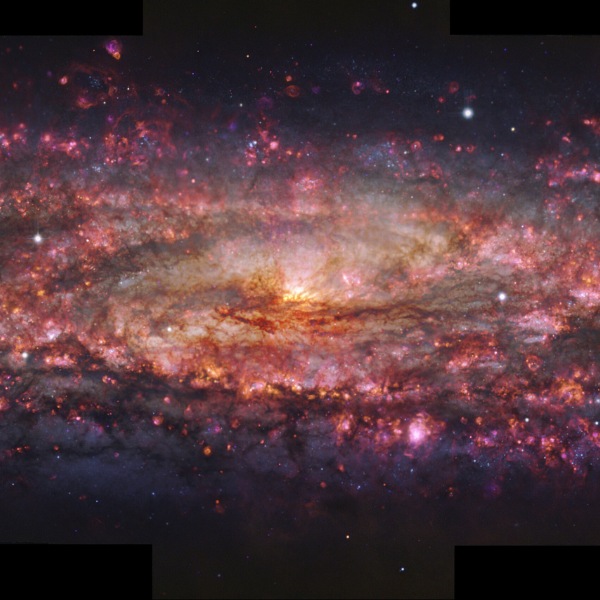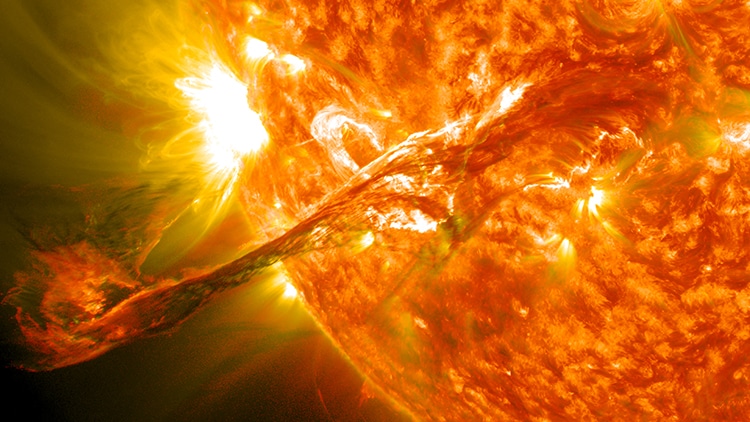
When solar activity contorts and realigns the sun’s magnetic fields, vast amounts of energy can be driven into space. This phenomenon can create a sudden flash of light—a solar flare. (Photo: NASA;GSFC;SDO/ NASA.)
In early May, solar flares caused stunning auroras, grabbing the attention of a lot of astronomy enthusiasts and the public at large. However, invisible to human eyes, one of the strongest solar flares that has ever been measured emerged less than a week later. This solar flare came from the same region of the Sun that caused the auroras. It is an intriguing piece of data for solar physicists who still have a lot of questions on how solar weather works.
The powerful flare was measured to be an X8.7 whereas the ones that caused beautiful night skies were X1-X2.25. Solar flares are rated on a scale similar to the Richter scale. This scale uses the letters A, B, C, M, or X, with X being the most powerful. The number designates by what factor the flares are bigger than a 1 of that class. So an X8 is eight times more powerful than an X1. The same sunspot area AR3664, which is bigger than 15 Earths wide, caused both flares. Yet it had moved closer to the edge of the visible sun, so the stronger flare did not cause the celestial display its predecessors had.
Scientists measured the last most powerful flare in 2017 originally as X8.2. After reassessing the image, they classed the flare as an X11.88. In other words, there's a possibility that the May 14 flare may also be revised to a greater number. The most powerful flare to ever be measured was estimated to be an X45 in 2003. Even without a revised measurement, May 14's flare is within the 20 most powerful flares recorded since the 1970s when space-based telescopes allowed for the Sun to be observed in terms of soft X-rays.
Solar flares are bursts of energy the Sun emits when its magnetic fields contort themselves. They happen more often and more powerfully during the maximum of a solar cycle which are roughly 11 years long. Flares are the most powerful explosions in our solar system and can affect our communication and power grids on Earth. Solar weather also impacts space missions along with infrastructure, which is why scientists are especially eager to better understand the solar cycle. Prior to May's activity, the solar maximum was expected to occur by July 2025. This means we may still have a lot more solar flares, and ideally auroras, to come within the next year.
A powerful solar flare that was at least an X8.7 was observed on May 14, 2024.
There may still be a lot more solar activity to happen in the next year, as we can't be sure when the solar maximum has occurred until after the fact.
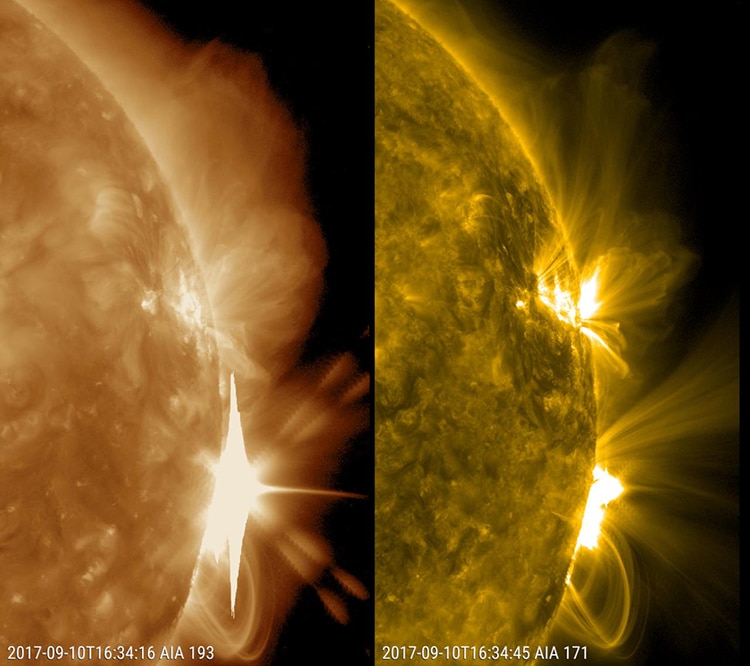
The Sun erupted with an X8 solar flare on Sept. 10, 2017. This is similarly sized to a recent solar flare in May. This is shown in two wavelengths of extreme ultraviolet light at the same time and each reveals different features. Both are colorized to identify in which wavelength they were observed. The coils of loops after the flare are the magnetic field lines reorganizing themselves after the eruption. (Photo: NASA;GSFC;SDO/ NASA.)
While not all solar flares cause auroras, they can still affect our satellites, power grids, and space missions.
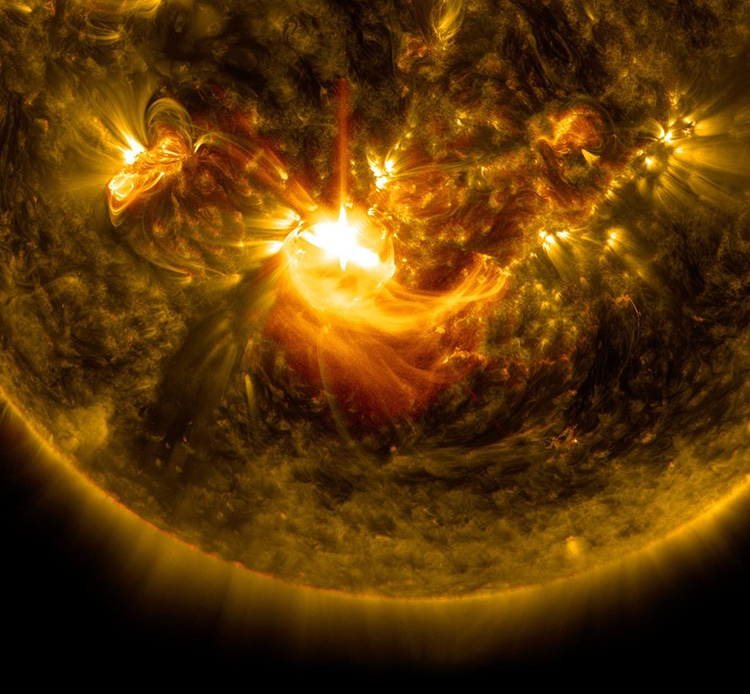
NASA's Solar Dynamics Observatory captured this image of a mid-level solar flare – as seen in the bright flash in the middle –on Dec. 16, 2014 shortly before midnight EST. (Photo Credit: NASA; Goddard; SDO/NASA.)
h/t: [ScienceAlert]
Related Articles:
Auroras Could Light Up the Skies Again in the Coming Weeks
ESO Unveils Incredible Photo Revealing How Giant Planets Are Formed
Breathtaking Timelapse Captures How the Sun Looks During Intense Solar Storms











































































